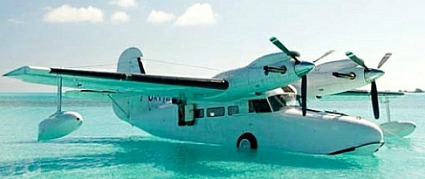Lake Amphibians

Lake amphibious aircraft began life when David Thurston designed a single engine sea plane while he was employed by Grumman Aircraft during the Second World War. Grumman Aircraft did not market the amphibious aircraft and so Thurston marketed them originally as Colonial Skimmers. Since that time the amphibious aircraft have undergone several different manufacturers and although there are a variety of models (with varying degrees of performance), the planes are known collectively as "Lake" amphibians.
The amphibious aircraft can be frequently seen in the bush, the tropics or the continental United States around suitable bodies of water. The Lake series are somewhat unusual in that their engine is fitted on top of a pylon above the aircraft's fuselage. The pylon is designed to sustain 20Gs (which is considered a fatal G-load in its own right), to allay fears that the engine will detach in a crash and come crashing down upon the aircraft's occupants in the event of a wreck.

The Lake series of amhibious aircraft featured a wide variety of engines (all Lycoming) from 150 to 270 hp. Many of the later models are turbocharged. The planes seat four people and will cruise 100 mph to 150 mph, for models with powerful, turbocharged engines. Many Lakes have good fuel carrying abilities because some fuel is stored in the outer wing sponsons.

The Lake series of amphibious aircraft are an elegant solution to the problem of designing a single engine sea plane, that being engine location that allows sufficient clearance from the water and spray. On float planes such as Super Cubs and Cessna 180s, clearance is adequate, but not exceptional. Water spray is the main concern and it has the ability to wreak all sorts of havoc with engines and propellers in poorly designed seaplanes. Some relatively rare aircraft have mounted the engine on the vertical stabilizer, but this places a good deal of weight and thrust away from the center of the aircraft, which can have very deleterious effects on the flying characteristics of the plane. Because the engine of the Lake is mounted substantially above the mid-line of the fuselage, elevator down force is always needed when power is being produced by the engine. In early models of the Lake, upturned fixed surfaces were incorporated in the horizontal stabilizer (see picture above). In latter models, the horizontal stabilizer and elevators were set at a pitch to compensate for the off-center engine thrust.

The Lakes are very capable seaplanes with a long history. Corrosion is a concern in earlier models, but generally Lakes are exceptional aircraft in their own right. The video features a Lake amphibious aircraft take-off which is really something to see.